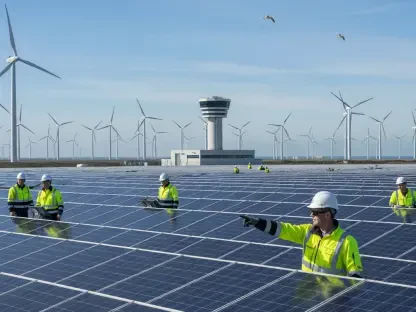California’s plan to drastically reduce vehicle emissions has ignited national discussions, especially as federal resistance looms. Launched by Governor Gavin Newsom’s initiative to phase out new gas-powered cars by 2035, these regulations mark California’s most resolute step toward mitigating climate change. The state’s strategy emerges from a history of severe air pollution, positioning it at the forefront of the United States’ ecological transformation. With vehicle emissions contributing significantly to greenhouse gases, California’s approach could reshape not just state policies but national standards as well.
Navigating Emission Standards: A Risky Chess Game
California’s consistent focus on tough emission rules arises from persistent air quality problems, especially in dense metropolitan areas like Los Angeles. Over decades, the state received waivers from the Environmental Protection Agency (EPA), enabling it to implement more stringent standards than federal requirements. This position gained stability under President Biden after challenges during President Trump’s term. The state’s pioneering role has consistently influenced federal dynamics, delineating its importance in the current debates surrounding climate policy.
Federal Pushback: Unpacking the Current Dynamics
Congressional Dynamics: Influence and Impacts
The current political discourse underscores a significant push from the Republican-controlled Congress to overturn California’s recently restored emission waivers. This shift departs from previously supportive stances under the Biden administration. Understanding these maneuvers involves evaluating potential ramifications for both industry stakeholders and the balance of state-federal authority. With Congress empowering itself to challenge state-level innovations, the tug-of-war extends into economic and regulatory dimensions, impacting automakers and consumer markets alike.
Economic and Environmental Fronts: Balancing Goals
California’s ambitious target to cease the sale of new gas-powered vehicles by 2035 holds profound implications. The automotive industry faces transformative pressures, prompting evaluations of economic and market impacts alongside environmental considerations. Manufacturers are tasked with navigating both competing interests and shifting consumer bases. This evolving reality highlights the complexities involved in balancing ecological objectives with economic viability, encompassing both risks and potential for innovation within vehicle production and sales.
Regional Market Dynamics: Variability and Readiness
The disparity across U.S. regions exacerbates complexities in adopting California’s stringent standards. While certain states emulate California’s model, others exhibit reluctance due to varied economic capacities, consumer readiness, and infrastructural capabilities. The focus on electric vehicle infrastructure and power grid enhancements reveals disparities in state preparedness. These variances present challenges to achieving uniform adoption of green technologies, illuminating the broader context of national market inconsistencies.
Projections for Emission Standards and Market Evolution
The trajectory toward stricter national emission standards amid technological advancements promises to reshape automotive markets. Emerging EV infrastructure improvements and regulatory innovations signify potential disruptions. Insights from industry forecasters point toward reduced emissions and a surge in sustainable vehicle solutions. Policymakers and automotive leaders grapple with navigating this transformation, underscoring the urgency to align technological progress with comprehensive regulatory frameworks.
Strategic Responses: Innovating for New Standards
Adapting to evolving emission policies necessitates strategic innovation from stakeholders. Enhancing EV infrastructure, fostering cross-sector collaborations, and aligning business models with regulatory shifts become imperative. Encouraging adaptability among manufacturers and consumers alike aids in transitioning to greener market practices, reinforcing competitiveness. Stakeholders must engage constructively with policy trends to sustain market relevance while advancing environmental goals.
Charting the Path Forward for Climate Policy
California’s emission standards represent a critical juncture, encapsulating a broader narrative of environmental transformation and regulatory complexity. Despite federal challenges, these policies have the capacity to inspire widespread adoption and innovation. Stakeholders encountering these dynamics must emphasize forward-thinking strategies to ensure sustainable market practices. Addressing these challenges presents opportunities for pioneering industries and trailblazing climate policies, ultimately striving toward a future of reduced environmental impact.









